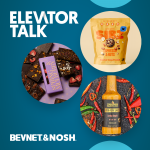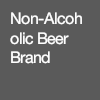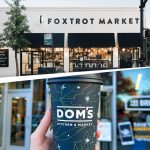IRI’s New Product Pacesetters: The Top Food and Beverages Launches of 2014
All startup brands know how difficult it is for new product launches to make an impact, especially during the first year. In its annual New Product Pacesetter report, IRI, a Chicago-based market research firm, featured the top food and beverage launches of 2014 (based on year one dollar sales in measured channels) and examined what they did right.
While nearly all of the products listed were born from the marketing and innovation divisions of food and beverage conglomerates, they nevertheless exhibited exceptional first-year sales success for consumer packaged goods (CPG), averaging on average $34.8 million per new product.
Even though most of the products are line extensions of already notable brands, entrepreneurs can still take away some tips from them on how to truly capture the consumers’ attention during the first year.
In particular, IRI states that understanding benefits that consumers want from foods and beverages is key to protecting and growing shelf space. Improved technology and analysis is allowing brands to zero in on the wants and needs of their target audience, IRI notes.
Additionally, IRI’s report pointed to innovation succeeding because it not only brings novelty to the consumer, it makes their lives easier and more enjoyable as well. This often leads to increased loyalty and increased revenue and profits for brands.
Here are some key statistics on new product consumers and its market.
- Seventeen percent of consumers are new product enthusiasts – meaning they identify themselves as people who are always on the lookout to try the latest and greatest products.
- Thirty-two percent (first place) of new product enthusiasts are in the category of food while beverages are tied for third place at 17 percent.
- From 2009 to 2014, there has been on average 2.2 more benefits (38 percent rise) per consumer packaged good.
- Sixty-one percent of food enthusiasts claim the primary driver of new product purchases was indulgence without having to pay restaurant prices
- Fifty-seven percent of beverage enthusiasts say that options which are truly new and unique are their drivers for purchase.
- In 2014, 53 percent of new brand entries came from food and beverage, driven by the quickly changing pace of consumers’ palates.
- Sixty to 80 percent of new product launches fail.
- Eighty-five percent of American household needs are consistently filled with the same 150 items.

Another key aspect of IRI’s 2014’s Pacesetters is manufacturers’ use of the four P’s of marketing: product, price, promotion and place (distribution).
Strategy of the Four “P”
It’s hard getting new products onto shelves, but getting them to standout among the masses of other products can be even more difficult. IRI states that Pacesetter companies were able to build competitive advantage and sustained brand growth through flawless execution of the four “P’s.” Here’s where entrepreneurs should take note:
Product
Consumers are expecting a lot from CPG brands these days. With food and beverage products, IRI’s Pacesetter brands were focused on delivering three main benefits to address consumer demands: simplicity, pro-quality, and an exciting experience.
- Simplicity: Nearly one-third of 2014’s most powerful new products focused on simplicity and making their products easier for consumers, IRI wrote. For food and beverage companies, this came in the form of making products with increased convenience for time-starved consumers (e.g. on-the-go foods) and also products with fewer or more simplified and natural ingredients.
- Pro-Quality: Thirty-eight percent of the year’s top selling brands food and beverage brands focused on more powerful and delicious products. This meant offering more restaurant or cafe quality products to the consumers. Items from restaurant and cafe brands such as Starbucks Discoveries and Iced Coffee, Red Lobster Cheddar Bay Biscuit Mix, and Olive Garden Signature Salad Dressing can be seen flooding grocery store aisles.
- Exciting Experience: Consumers are looking to add excitement to their everyday lives through new food and beverage items. IRI notes that the key factors consumers are looking for are adding indulgence, having a sensory experience, and achieving excitement — all within their already-squeezed budgets.
Price
Nearly half of consumers (48 percent) surveyed by IRI indicated that their interest and awareness of new products was heavily influenced by price. This was especially true among millennials and lower-income consumers.
However, with food and beverage, providing value was not always about having the lowest price. In fact, 36 percent of consumers actively sought new food products that helped them better meet their nutritional goals. Many of 2014’s top-selling product launches actually had sizeable premiums.
For example, SkinnyPop, on average, sold at a price that was 72 percent higher than its category’s average price, and IRI attributes that to the brand addressing key consumer needs and wants such as offering a healthy, premium quality, portable snack with a variety of flavors.
Promotion
Offering and communicating promotion is key to a new product launch’s first-year success. IRI points out that in year one, deals play a major role in capturing consumers’ attention. Often times, the most successful products sell half of their first-year volume with a deal.
For example, Yoplait Greek Blended, one of the top Pacesetter launches in 2014, sold 73 percent of its volume on promotion. The Pacesetter report looked at how new brand launches kept momentum in year two and found that 60 percent of the brands maintained promotional levels.
Offering a deal is one thing, but that needs to be communicated to the consumer in order to lead to a purchase. IRI states that brands need to have a deep understanding of what mechanisms and media will most effectively reach its targeted audience. Especially with the online market, where consumers can act as unofficial brand ambassadors, brands need to develop insight as how to best communicate to the group.
Place/Distribution
Knowing the places where your target consumers shop and placing your products there is an important part in ensuring the success of your new launch. For example, more than two-thirds of consumers are most likely to turn to the grocery channel when buying a new food product. Half of Hispanic shoppers turn to mass-merchandising stores for their first purchase, but are more likely than other consumer groups to try a new product for the first time at the drug channel.
Because there are so many choices in the marketplace, the chances of consumers looking just for your new product is slim So it’s up to the brand to closely monitor consumers’ purchasing behavior and place their products on the shelves of where their target consumers are most likely to buy it.














